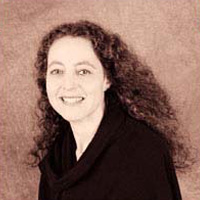


Member, Freestyle Advisory Board of Photographic Professionals
Jill Enfield, one of this country's most experienced and respected handcoloring artists, is a fine art, editorial and commercial photographer. Jill has taught handcoloring and non-silver techniques at Parsons School of Design, The New School, Fashion Institute of Technology, New York University, Long Island University and the International Center of Photography in New York, as well as in workshops throughout the United States and Europe. Jill's more recent emphasis has been on the wet plate collodion process, originally used by Matthew Brady during the Civil War. Her work is in the collections of RJ Reynolds Company, Southeast Banking Corporation, The Amon Carter Museum, The Boca Raton Museum of Art, Hotel Parisi in LaJolla, and Museo de Arte Moderno de Medellin in Colombia, where her work was shown during a three month exhibition that traveled throughout the country. Jill's commercial clients include Fortune Magazine, Kodak, Hasselblad, Nikon, Penguin Putnam, Incorporated, St. Martin's Press, LIFE, Vassarette Lingerie, National Geographic, The New York Times Magazine, American Heritage Magazine, AT&T, Johnson & Johnson, Woman's Day Magazine and many others. Her personal work has appeared in such publications as National Geographic, Camera Arts, PDN, Hasselblad's FORUM Magazine, Nikon World, Camera & Darkroom Techniques, Archive Books, Step by Step, Shutterbug, Popular Photography, Digital Camera and ZOOM. Jill's book on non-silver techniques titled Photo Imaging: A Complete Guide to Alternative Processes was published by Watson-Guptill in November 2002 and won the Golden Light Award for Best Technical Book of 2002 through the Maine Photographic Workshop. Jill is working on an updated version expected to be released in the coming year. In May 2003, Jill's website was awarded one of the "25 Best Websites" by Photo District News Magazine. Jill's work has been featured in over thirty shows during her career, including an exhibition at The Vivienne Esders Gallery in Paris. Jill had two one-woman shows in 2003; a lecture at the George Eastman House in Rochester, New York followed by an opening at Artisan Works Gallery in September 2003. In December 2003 her work was featured at the Light Factory in Charlotte, North Carolina. A workshop and lecture were included during the opening weekend. In 2006, one of Jill’s images was one of forty-two images selected from thousands in the Here is New York archive of New York City to commemorate the fifth anniversary of 9/11. The prints hung at Ground Zero in Manhattan for a year. In January 2009, Jill was also given a solo show at Tilt Gallery in Phoenix, Arizona. In September of the same year, Jill’s wet collodion portraits of immigrants in New York City were supported by a faculty development grant awarded to Jill from The New School. The same body of work was the featured exhibition at Ellis Island, in tandem with the annual Black Tie Gala for the charity organization Upwardly Global, a support resource for placing professionals from other nations with appropriate career options in the United States. A podcast about the project can be heard by going to Jill's media page. Also in 2009, Jill’s handcoloring work became part of the traveling exhibition Four Visions in a Different Light, beginning in Fall 2009 and traveling through 2011. Nikon has honored Jill by featuring her on their website as a "Legend Behind The Lens" photographer as well as in their Full-Line product guide and an upcoming issue of Nikon World. Jill has also appeared on The Today Show Weekend Edition, New York One and The CBS Saturday Morning Edition as a spokesperson for www.takegreatpictures.com on several occasions.
| Photography and Encaustic |
| Tintypes with Holga Cameras |
| The Importance of the Darkroom In Photographic Education |